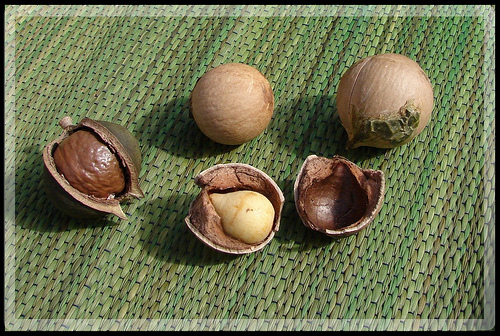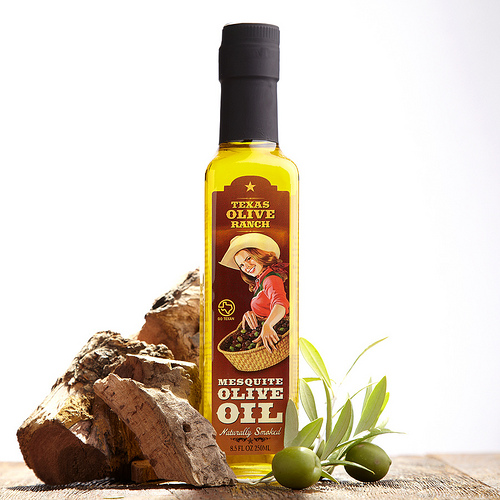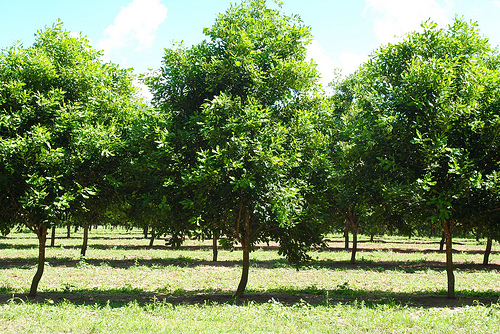Adaptations: Survival of the fittest
Morphological Adaptations:
In order to withstand the elements
and interactions between other regional organisms, the
Macadamia tetraphylla has developed some important physical
adaptations. Here, natural selection has chosen the best
qualities to thrive, and therefore give rise to more organisms
with these desired aspects. The two most distinct
qualities within the Macadamia tetraphylla are found in
the nut and the root system.
Nut:
The nut of the Macadamia
tetraphylla is roughly 2-3 cm think. For those of you
that don't know, that's very dense! There are many reasons
for this thickness in nut coating. One of many reasons is
to aid in dispersal of the nut. Many birds and and small
rodents will pick up fallen Macadamia nuts in order to
eat them. The problem, however, is that many of these
birds or small rodents cannot break through the shell!
 So,
after transporting it a distance from the parental tree, the
animal tries- and generally fails- to open the shell to get to
the kernel. After a certain period of unsuccessful
attempts, the organism gives up and leaves the seed. Then,
the seed just lies there and waits for the proper conditions
until it can grow. Another reason for the shell thickness
is to aid in seed viability. Due to the environment that
they live in, Macadamia trees sometimes encounter
droughts. Here, the thickness of the shell, and just vast
size, allow for the food and water within the nut to continue to
feed the seed. The thickness helps to prevent desiccation.
So,
after transporting it a distance from the parental tree, the
animal tries- and generally fails- to open the shell to get to
the kernel. After a certain period of unsuccessful
attempts, the organism gives up and leaves the seed. Then,
the seed just lies there and waits for the proper conditions
until it can grow. Another reason for the shell thickness
is to aid in seed viability. Due to the environment that
they live in, Macadamia trees sometimes encounter
droughts. Here, the thickness of the shell, and just vast
size, allow for the food and water within the nut to continue to
feed the seed. The thickness helps to prevent desiccation.
Root system:
Similar to the nut, the root system
aids in times of drought. The vast system of roots allows
for the uptake of the majority of the water around the organism.
This is important because during times of drought, the tree may
not receive water from rainfall for a long period of time.
Therefore, the massive root system aids the tree in taking up as
much water as possible while it is available. In addition,
it may also be able to obtain water through underground streams
or any form of ground water. Another reason for the large
root system is to support the tree. The Macadamia
tree has broad leaves that will catch wind very easily. In
order to support the tree and avoid wind damage, the roots need
to be vast and have a firm hold onto the substrate.
drought, the tree may
not receive water from rainfall for a long period of time.
Therefore, the massive root system aids the tree in taking up as
much water as possible while it is available. In addition,
it may also be able to obtain water through underground streams
or any form of ground water. Another reason for the large
root system is to support the tree. The Macadamia
tree has broad leaves that will catch wind very easily. In
order to support the tree and avoid wind damage, the roots need
to be vast and have a firm hold onto the substrate.
Hybridization:
The genus Macadamia
includes more than 10 different species of plants.
The two most common are the Macadamia
tetraphylla and the Macadamia integrifolia.
In the wild, these species have
 been known to
reproduce together to create a hybrid that is
generally know as Macadamia ternifolia.
This hybrid of plant tends to have a thinner shell
than the other two species of Macadamia;
however, their kernel is larger. This is very
useful in the commercial world. The hybrid
Macadamia ternifolia is used as a commercial
crop to grow the majority of the macadamia nuts that
are produced, and are especially prevalent in
Hawaii's commercial growing business.
been known to
reproduce together to create a hybrid that is
generally know as Macadamia ternifolia.
This hybrid of plant tends to have a thinner shell
than the other two species of Macadamia;
however, their kernel is larger. This is very
useful in the commercial world. The hybrid
Macadamia ternifolia is used as a commercial
crop to grow the majority of the macadamia nuts that
are produced, and are especially prevalent in
Hawaii's commercial growing business.
Nutritionally, the kernel in the hybrid's nut is full of many
beneficial fatty acids. In fact, macadamia
seed nut oil that was produced from a hybrid has a
similar composition to olive oil. Except, they
say it's even healthier!
Cultivation:
When cultivating the
Macadamia tetraphylla, these plants are able to
adapt to
 their changed environments. Although
they might not grow in their natural habitats, the
plants are still able to prosper through some very
basic adaptations. For example, if grown in an
environment with more rainfall or less soil
drainage, the plants will leave the stomata open
longer to allow for transpiration of the water out
of the leaves. This then allows the roots to
take in the extra water in the soil without taking
in too much and drowning the plant.
their changed environments. Although
they might not grow in their natural habitats, the
plants are still able to prosper through some very
basic adaptations. For example, if grown in an
environment with more rainfall or less soil
drainage, the plants will leave the stomata open
longer to allow for transpiration of the water out
of the leaves. This then allows the roots to
take in the extra water in the soil without taking
in too much and drowning the plant.
For more information on adaptations due to cultivation, click
here.
Continue on to
Nutrition!